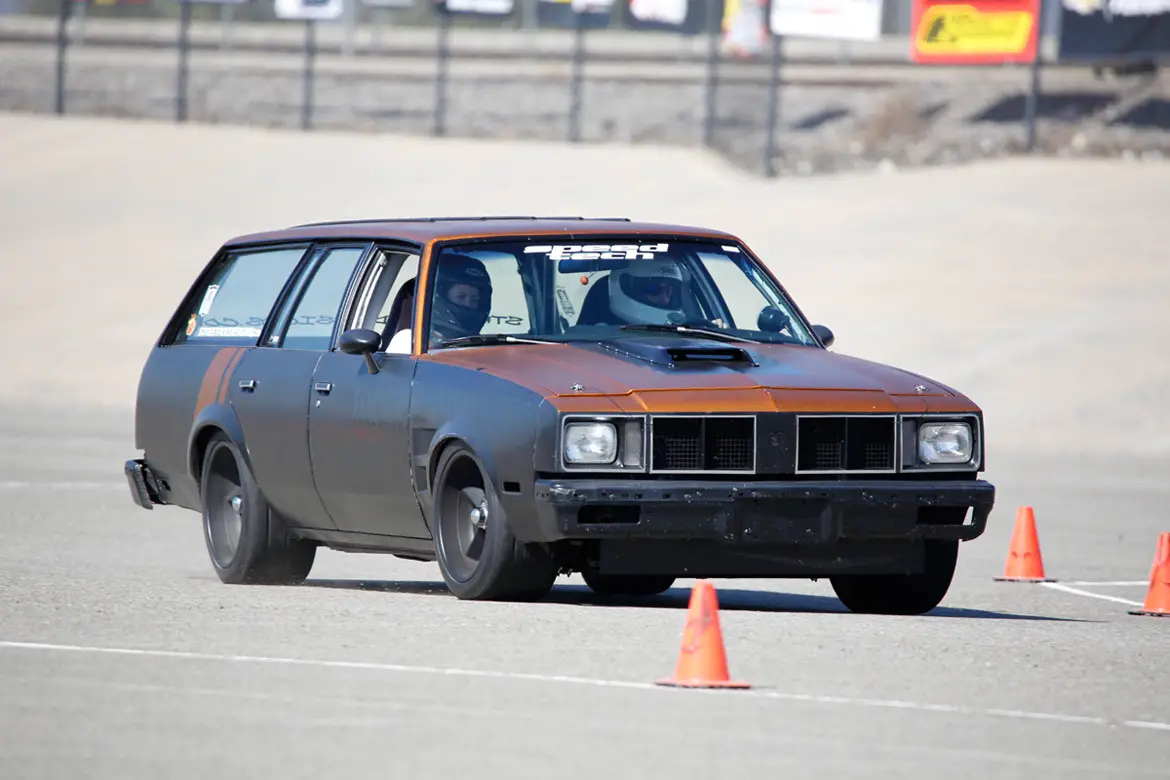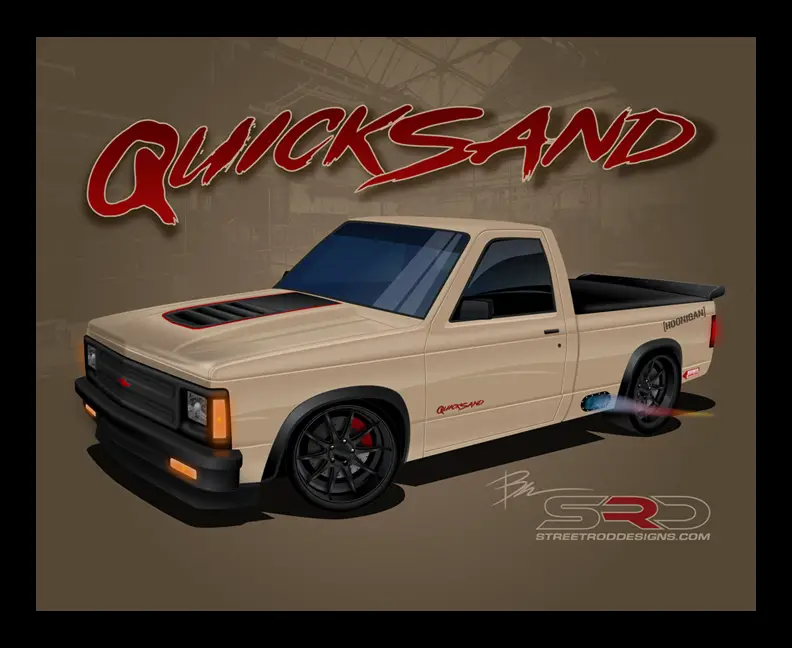Some things to consider- Spring rate means how many pounds it takes to compress a spring 1". For example IIRC factory springs are around 350 lb spring rate, so it takes 350 lbs to lower the car 1". To maintain a decent ride height a 350 lb spring will be taller than a spring with a heavier performance spring rate. I used Moog # 5660 S10 springs in my first suspension swap, IIRC they were around 590 lb rate. Moog # 5662 are around 700 lbs. The 5660 were already 2" shorter uninstalled than a G-body uninstalled spring. BUT that didn't mean it would drop the car 2" by installing them because it takes more weight to compress them. I ended up cutting about 3/4 coil off to get about a 2.5" drop. I started with 1/2 coil cut off and drove it for a few days to get them to settle in, then later cut another 1/4 coil off to get it where I wanted it.
In your case you can anticipate how much more a V8 will drop the car over the V6 simply by finding out the weight difference. For example if you run a 590 lb spring and the V8 is 150 lbs heavier than the V6 it's not going to drop that much more, maybe 1/4", which is barely noticeable if at all.
Common drop spindles are a great way to lower a car for looks but they are not good for making the car handle better. Most drop spindles are designed to maintain stock geometry and in our case stock G-body geometry sucks, to put it mildly. Most of the Pro Touring guys like myself use stock spindles, or if you have the extra cash to better geometry go to aftermarket performance spindles like ATS or Ridetech that are re-engineered to correct geometry issues. A stock spindle with 1/2" taller upper and lower ball joints and a good performance alignment on a 2"+ dropped spring is a great place to start for better handling. Aftermarket high quality control arms from the main 5 or 6 performance suspension manufacturers will help correct the bad geometry and make it able to achieve an even more aggressive alignment.
On average to keep bump steer/ geometry in a decent range the horizontal frame rail just behind the front tire should be between around 6-6.5" off the ground. Lower than that bump steer starts to get pretty crappy. On Pumkinator, my 79 Cutlass wagon, I dropped it about 2.5" from where it was stock and that put the rail around 6.5". All cars will be slightly different based on how much the car has sagged over the years.
On spring rate, don't be afraid of a heavier rate. Currently as a daily driver I run coilovers with 700 lbs up front and 350 lbs in the rear. As the car is gravitating towards more autocross duty I may go higher on the springs. With 700 it rides firm but not overbearing- think BMW or other sports car in sport mode. The adjustment of the dials for shock valving on the other hand have WAY more effect on the ride quality/ firmness than the spring. If you want a milder spring you can get better handling without the stiffness by going to a larger sway bar, which effectively increases spring rate but only when the car leans in a corner, no noticeable increase in firmness while cruising.
With aftermarket springs like Eibach for example, it's a crap shoot with what spring rate you get. I've called several "lowered spring" companies asking what spring rate their drop springs are and after fumbling for an answer it finally comes out they don't know. That's why a lot of us run Moog springs, at least they give an "advertised" spring rate. I'm sure they still experience the +/- inconsistency of manufacturing but at least you'll know it'll be close to what they say it is. For this reason, plus the tunability benefits, I finally went to Viking double adjustable coilovers.
You mentioned firming up the ride specifically. That can be done alone through a quality shock with a performance valving. For a simple bolt in, Bilstein has a nice responsive feel. However for a standard shock they're a little spendy, and it's not really that much more to just buy an adjustable shock, such as the Viking (or other brand) "smooth body" shocks. With adjustable shocks you can tune it the way you like it, and actually improve handling by messing around until you find that front to rear balance sweet spot, i.e. making the car more neutral rather than fighting under steer or over steer. Coilovers are the ultimate in adjustability, but maybe a little overkill for an average simple street cruiser, they're just not really necessary and a basic cruiser will never take full advantage of their potential.
There's so much more to discuss about suspensions but I don't want to get too complicated to answer a simple original question. Hope what I've said gives you food for thought. If you do have further questions feel free to throw them up here.
Here's a pic of Pumkinator in action. Although it looks like I'm driving flat I'm actually cornering quite hard, coming out of a near 180* turn. You can see the turning G's illustrated in the angle of the little pumpkin hanging from the rear view mirror. This kind of balance comes from a well matched and tuned suspension; even in hard cornering it's keeping a good contact patch and grip on all 4 tires. Keep in mind this was my daily driver too at the time.





